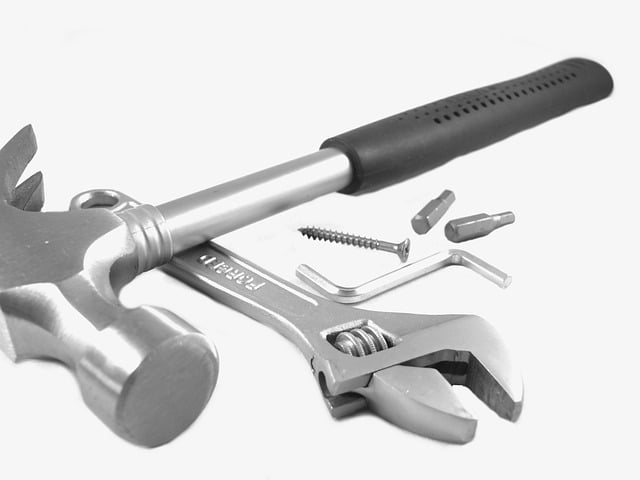Residential stem wall reinforcement is crucial for addressing structural integrity issues in homes, preventing settling, cracking, or collapse caused by soil pressure and water intrusion. Techniques like steel braces, hydraulic cement injection, and replacement with reinforced concrete panels ensure longevity and safety. Choosing the right method (e.g., steel beam vs. structural foam) depends on home structure and specific needs. Modern technologies enhance precision and speed in foundation repair, while proactive investment in reinforcement offers significant long-term cost savings and increased property value. Regular inspections and maintenance are vital to prolonging the life of reinforced stem walls.
“Strengthen your home’s foundation with an in-depth look at residential stem wall reinforcement. This comprehensive guide explores the essential practice of butting against potential structural failures, a common concern in many residences. We delve into the science behind stem walls, uncovering the root causes of their deterioration and offering expert insights on effective reinforcement techniques. From traditional methods to modern technological advancements, learn how to choose the optimal strategy for your property’s unique needs, ensuring longevity and peace of mind in the face of potential residential foundation repair challenges.”
Understanding Residential Stem Wall Reinforcement: A Basic Overview

Residential stem wall reinforcement is a critical aspect of residential foundation repair, addressing structural integrity and stability for homes. Stem walls, also known as basement or crawl space walls, are often overlooked but play a significant role in supporting the overall structure. These walls bear the brunt of soil pressure from above, especially in areas with high water tables or expansive clay soils. Over time, without adequate reinforcement, stem walls can settle, crack, or even collapse, leading to serious structural damage and costly repairs.
Understanding the importance of strong stem walls is the first step towards effective residential foundation repair. Reinforcement techniques include bracings, anchors, and various wall plate systems designed to distribute soil pressure evenly. By implementing these measures, homeowners can mitigate risks associated with weak stem walls, ensuring the longevity and safety of their homes.
Common Causes of Stem Wall Failure in Residences

Stem walls, often a key structural element in residential construction, can fail due to various factors that compromise their integrity and stability. One of the primary concerns is water intrusion. Moisture seeping into the wall through cracks or improper sealing can lead to serious damage, especially when coupled with freezing temperatures, causing the wall to expand and contract unpredictably. Over time, this cyclical stress weakens the stem wall’s structural bonds.
Another common cause of stem wall failure is settlement or shifting of the soil beneath the foundation. This movement can be triggered by factors like poor soil compaction, tree root intrusion, or nearby construction activities. The resulting uneven distribution of weight exerts pressure on the stem wall, leading to cracks and potential collapse if left unaddressed. Therefore, identifying and rectifying these issues is crucial in ensuring the longevity of residential properties, and often requires professional intervention for effective residential foundation repair.
Types of Stem Wall Reinforcement Techniques

When it comes to reinforcing stem walls in residential foundation repair, several techniques are available, each with its unique advantages and applications. One common method involves the use of steel braces, which are installed vertically along the stem wall to provide additional structural support. These braces are particularly effective for preventing lateral movement and protecting against soil erosion around the foundation.
Another approach is the integration of hydraulic cement or polymer-based injectants into the existing stem wall structure. This technique not only strengthens the wall but also helps to fill any cracks or voids, enhancing overall stability. For more severe cases, full replacement of the stem wall with reinforced concrete or precast panels might be necessary. Such solutions offer superior strength and durability, ensuring a solid and secure foundation for residential structures.
Choosing the Right Reinforcement Method for Your Home

When it comes to residential stem wall reinforcement, selecting the optimal method is paramount for effective and long-lasting residential foundation repair. The choice depends on several factors unique to your home’s structure and needs. One popular option is steel beam reinforcement, which offers exceptional strength and stability, ideal for restoring or preventing further damage to stem walls. This method involves integrating steel beams into the existing wall to bear the load, ensuring a robust and secure fix.
Alternatively, for lighter-weight reinforcement, structural foam can be injected into cracks and voids within the stem wall. This less invasive technique provides excellent compression strength while also allowing for minimal disruption to your home’s interior. Each method has its advantages, and understanding these will help homeowners make informed decisions regarding their residential foundation repair needs, ultimately choosing the best solution for long-term structural integrity.
The Role of Technology in Modern Stem Wall Repair

In the realm of residential foundation repair, technology plays a pivotal role in enhancing the efficiency and effectiveness of stem wall reinforcement. Modern solutions offer innovative approaches to addressing structural weaknesses, ensuring long-lasting stability for homes. Advanced tools and techniques allow professionals to accurately diagnose issues and implement tailored repairs, catering to the unique needs of each property.
From drone inspections that provide aerial views for a comprehensive assessment to robotic systems aiding in precise material application, technology streamlines the entire process. These innovations not only expedite repairs but also contribute to more accurate, durable outcomes. As the demand for residential foundation repair continues to grow, embracing technological advancements ensures that homeowners receive top-tier solutions, promoting the longevity and safety of their living spaces.
Step-by-Step Guide to Reinforcing a Residential Stem Wall

Reinforcing a residential stem wall is an important step in ensuring the structural integrity of your home, especially in regions prone to seismic activity or high wind loads. Here’s a step-by-step guide on how to achieve this crucial Residential Foundation Repair task.
1. Assess and Prepare: Begin by thoroughly inspecting the stem wall for any signs of damage or weakness. Clear the area of debris and ensure proper access for your tools and materials. Create a detailed plan based on the specific needs of your stem wall, considering factors like height, width, and local building codes.
2. Install Bracing: Use high-quality wooden braces or steel rods to provide additional support. Secure them vertically along the stem wall, spacing them evenly to create a robust framework. These braces should be anchored firmly into the existing wall using concrete or metal brackets for enhanced stability.
3. Add Reinforcing Mesh or Rebar: For extra reinforcement, incorporate mesh or rebar into the construction. This step is particularly beneficial in areas with high soil pressure or heavy loads on the foundation. Embed the mesh or rebar vertically and horizontally to create a robust grid system, ensuring complete coverage of the stem wall.
4. Apply Structural Adhesive: To strengthen the bond between the new reinforcing materials and the existing stem wall, use a structural adhesive suitable for concrete and steel. This step ensures the longevity and durability of the reinforcement, making your residential foundation repair more effective.
5. Final Checks and Verification: Once the reinforcement is in place, verify that all components are securely fastened and aligned. Check for any signs of movement or stress on the wall to ensure the stability of the entire structure.
Cost Considerations and ROI of Stem Wall Repair

When considering residential stem wall reinforcement, one of the first aspects homeowners think about is the cost. Unlike some repairs that can be addressed with quick fixes, stem wall reinforcement often involves more significant investment due to the structural nature of the work. However, it’s crucial to view this expense as an essential long-term solution rather than a mere expenditure. The return on investment (ROI) for stem wall repair is substantial when you consider the prevention of more costly foundation issues in the future.
Delving into residential foundation repair statistics reveals that timely reinforcement can save homeowners thousands, if not tens of thousands, of dollars over the lifespan of their homes. By addressing stem wall weaknesses early, you mitigate the risk of water intrusion, soil erosion, and the resulting damage to the foundation, basement, or crawl space. This proactive approach not only enhances the structural integrity of your home but also increases its resale value, providing a clear financial benefit that far outweighs the initial cost of reinforcement.
Maintaining Your Reinforced Stem Wall: Long-Term Tips

Maintaining your reinforced stem wall is an essential aspect of long-term residential foundation repair. Regular inspection is key; look for any signs of damage, cracks, or bulges that could indicate potential issues. Addressing these problems early on prevents further deterioration and costly repairs.
Implementing proper drainage around the base of the wall is crucial to diverting water away from the stem. Ensure downspouts are properly directed and clear of obstructions, allowing rainwater to flow away smoothly. Additionally, applying a waterproof barrier can provide an extra layer of protection against moisture intrusion, prolonging the life of your reinforced stem wall.
